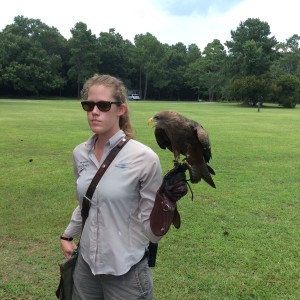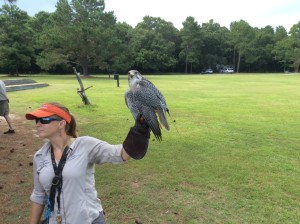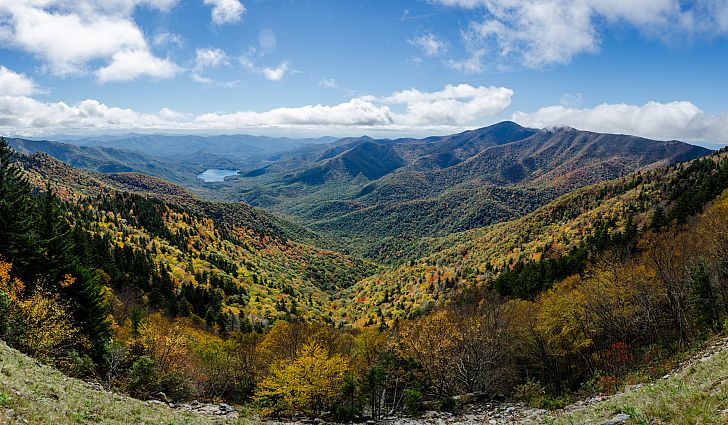Leave the Feathers – Journey to The Birds of Prey
The grandchildren needed an escape from a grumpy grandpa Mensch, so grandma Mensch decided that an outing to see the Birds of Prey in Awendaw, SC was the right thing to do. Where the heck is Awendaw, SC you ask? I had the same thought. Thank goodness for Google Maps. I just had to type in “The Center for Birds of Prey” and up pops a map with a stick pin showing Awendaw, SC, located a few miles north of the Isle of Palms connector on Highway 17. That is Mount Pleasant for the uninitiated. Okay, Siri, lead the way.
The Center sits on 150 acres of prime forest and swamp with a narrow dirt road as the entrance way. The Francis Marion Forest is on one side and the Cape Romain National Wildlife Refuge is on the other. I followed the road for less than a mile to the free parking in a field shaded by the trees. This was a Thursday. It had to be a Thursday since the Center has limited hours: Thursday, Friday and Saturday only, thank you. There is nothing fancy or upscale about the Center. Everything is outdoors and some of the paths are shaded. The restrooms are those green portable things.
We checked in at the open air reception area which also served as gift shop and refreshment station. We were early for the 2 o’clock tour and headed for the path to view the resident raptors. The vulture cafeteria sign caught my eye. We followed the path to a deer carcass that the vultures were enjoying. Yuck, back to the aviaries.
Megan, our tour guide, had the group engaged with a query-oriented presentation on bird biology that had us eating out of her hand to learn more about our feathered-friends. The bald eagles were most impressive close-up. Megan’s tidbit here was that the screeching of eagles is so unimpressive that in movies their voices are dubbed over to make them appear more formidable.
Hawks, falcons, kites, vultures and other birds of prey were among those on display. Megan pointed out the numerous bird feathers on the ground outside the cages and warned us not to take any with us. Apparently there is a federal law prohibiting the possession of feathers of migratory birds without a permit. The grandchildren and several other young visitors were disappointed to hear that warning.
Our admission included two demonstrations of raptor flight. In the avian amphitheater, a large cleared field, we sat on timbers in a semi-circle to watch a hawk and a kite come swooping in to their handlers’ gloved-hand to retrieve some juicy meat. A non-resident bird was very territorial and made a big ruckus when the raptor approached some trees where it probably had a nest. The raptor handlers brought each of the birds to the audience for a close-up view.
We followed our leader Steve across the field to the second demonstration at the Owl Wood. We sat on benches in a circle and the owls swooped in from behind to retrieve their treat from the handler in the center of the ring. We never heard them flying, they just appeared without a sound and scared us as they flew over our heads. Owls are the stealth bombers among the birds of prey. The owl highlight was the baby Asian Brown Wood Owl that was hatched in captivity and was still learning to fly. It jumped off the handler’s arm, flapped a few times and hit the ground. The grandchildren had close encounters with this owl that will definitely be in the “what I did last summer” report for the first week of school.
The rain clouds appeared just as the owl demonstration concluded and we made a hasty retreat to the car. Wildlife fans should plan on more than the two hours (tour and demonstration) when they visit the Center. There are fifty birds of prey to view along the aviary paths, the vulture cafeteria and the Owl Wood. The Center’s website is http://www.thecenterforbirdsofprey.org.
To quote my granddaughter: “I liked how the woman put the meat on her finger and the bird swooped by and ate it. I like how the woman gave detailed facts about the birds. I liked learning about the vulture restaurant. I like the brown Asian owl. It was pretty!




